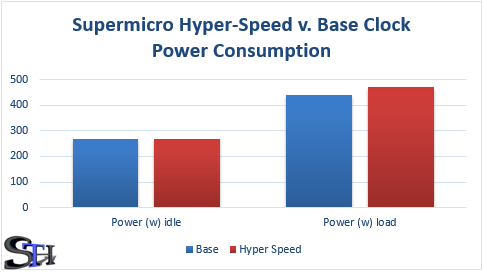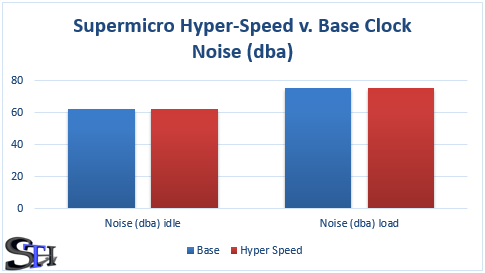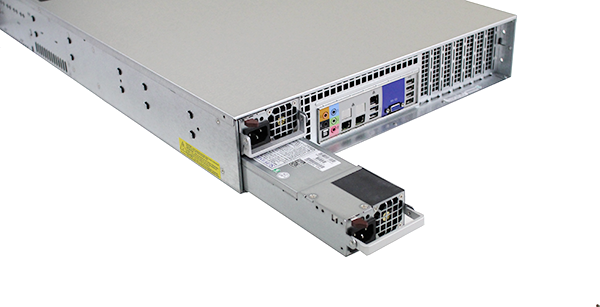In previous articles, we have looked at the Supermicro Hyper-Speed platform from a number of different angles. An important aspect to keep in mind with these servers is their power consumption. While we have seen a 67% increase in speed with Supermicro Hyper-Speed servers and a greater than 20% memory speed increase, and it is important to see the ongoing cost in terms of power consumption. One other piece of data folks are usually interested in is noise. In this article we will look at both aspects and the impact of enabling Hyper-Speed over base clocks.
Test Configuration
Supermicro sent the following test configuration for our testing, to which we added Kingston Registered ECC DIMMs. This represents one common configuration for a compute node. One other popular configuration is using dual Intel Xeon E5-2643CPUs (4C/8T) for applications where one needs high clock speed and lower core counts due to per-core license costs.
- Processors: Intel Xeon E5-2687W @ stock and 3.224GHz base clocks
- Chassis: Supermicro SYS-6027AX-TRF with Supermicro X9DAX-iFMotherboard
- Memory: 64GB using 8x 8GB Kingston 1600MHz Registered ECC DDR3 DIMMs
- SSD: Samsung 830 256GB
- Operating System: Ubuntu Server 12.10
One other configuration change we made was to remove the Mellanox Infiniband cards. The goal was to get the configuration lean for memory benchmarking but also to provide baseline power and noise figures.
Supermicro Hyper-Speed Power Consumption
One question raised in the comments our previous piece with Supermicro Hyper-Speed benchmarks was whether or not the power consumption changed significantly when Hyper-Speed mode is enabled. Today we have results using the Extech 380803 True RMS Power Analyzer we use for power consumption testing.

As one can see, idle power consumption is very close, in fact too close to call. Load power consumption did go up, but not by a large margin. One must remember that we did not increase vCore or memory voltages. Also, in these servers the CPU and memory are not the only components drawing power so the effect of higher speeds is somewhat muted in terms of overall power consumption. The test server drew under 5A at 120V which is a good metric. In some environments, it may even be enough to fit into 4A usable.
Supermicro Hyper-Speed Noise
This is perhaps one of the most anti-climatic results of testing the Supermicro Hyper-Speed platform. We used the same test setup with our Extech 407764 NIST calibrated sound meter with microphone extension for remote monitoring of the test environment that we use for these tests. One other important note is that we allowed. the system to control fan speed, so the more heat created the faster the fans spin.

As one can see the results did not change. What we can infer from this is that one way the system is keeping power consumption in check is by keeping fan speeds at similar speeds based on loads and heat generated. Temperatures stayed within a 1C margin between the tests after 12 hours of heat soak, so the cooling is clearly working.
Conclusion
Overall a strong showing for the Supermicro Hyper-Speed server. There is a power consumption change by enabling Hyper-Speed, but this is very much in-line with performance increases. Keeping a reasonable power profile is also helped by the 80+ Platinum power supplies and the fact that the fans seem to cool the system with ease under load.





Not bad results at all.